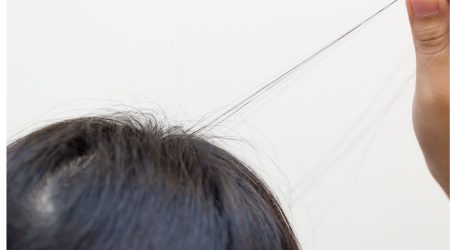Trichotillomania

Trichotillomania, also called hair-pulling disorder, is a disorder that involves recurrent, irresistible urges to pull out hair from your scalp, eyebrows or other areas of your body
Hair pulling from the scalp often leaves patchy bald spots, which causes significant distress and can interfere with social or work functioning. People with trichotillomania may go to great lengths to disguise the loss of hair.
For some people, trichotillomania may be mild and generally manageable. For others, the compulsive urge to pull hair is overwhelming. Some treatment options have helped many people reduce their hair pulling or stop entirely.
Symptoms
People with trichotillomania feel a building tension or urge to pull their hair. This may include the hair on their scalp, on their eyebrows or in their groin. Pulling hair out can temporarily bring a release in tension, giving a feeling of relief. It can soothe feelings of stress and anxiety. It may even happen without conscious thought.
A session of hair-pulling may be triggered by stress or feeling restless. However, hair-pulling may also happen when you feel relaxed, such as when you are reading or watching TV.
Hair-pulling can create obvious bald or thin spots.
Other physical symptoms can include:
- sore and infected skin
- permanent damage to skin and hair follicles
- hand injury from repetitive use
- a hair ball that requires surgical removal (for those who chew or eat the pulled hair).
Causes
The causes of trichotillomania are not well understood.
People with trichotillomania may suffer from anxiety and depression or obsessive-compulsive disorder.
It is commonly associated with other body-focused repetitive behaviours, such as nail biting, nail picking, skin picking, acne picking, lip biting and cheek chewing.
Treatments
Treatment should start with reassurance, education of parent and caregiver, and discussion around possible options to manage the condition.
Behavioural therapy can be effective, especially a form of cognitive behavioural therapy known as habit reversal training. It can also be combined with other cognitive therapies. These therapies may help you identify what prompts your hair-pulling and to work out strategies to avoid the behaviour.
In younger children, trichotillomania is generally benign and self-limiting and children usually outgrow the condition
In resistant cases in adolescents and adults, medications such as tricyclic antidepressants and selective serotonin uptake inhibitors may be considered by an appropriately trained GP or specialist.
Resources
For further information, you can visit the following resources:

